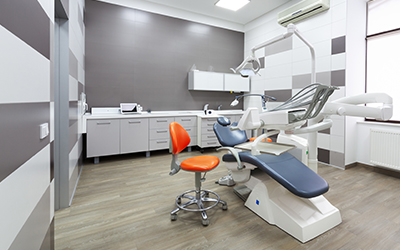Posted on Jan 13, 2014
Image Credit: © Dreamstime.com
Make the Most of your Dental Practice Transition
Main Content A+ A- A
When selling a dental practice, most sellers are focused on three things:
- Timing of the sale,
- An accurate listing price, and
- Their bottom line (in terms of cash-in-hand).
No dental practice sale is exactly the same, but there are measures that can improve the end result. Some of these strategies may seem obvious while a few are a bit more involved. Let’s consider the ways that you can increase your bottom line when selling your dental practice:
Investments in Human Resources: Often, the seller isn’t aware of the appeal of a well-trained, productive team. I’m personally much more attached to my dental hygienist than my dentist. Forgive me, doctor but it’s true. Seriously, a team of employees can really make your practice more attractive and allow you to list it at a higher price. When they make their dental practice transition, the buyer doesn’t have to overhaul the staff. In cases like mine, there will most likely be greater patient retention if patients are familiar with and like the existing staff. When purchasing a well-staffed practice, the buyer doesn’t miss a beat. They can come in and just continue moving forward, making improvements to the practice from a place of strength.
Upgrades: The fact is: the look-and-feel of the office itself is an area of perceived value. Especially when it comes to furniture and décor, which is all the more reason to update and put a fresh coat of paint on the place. You’d be amazed what a difference that makes (and small, inexpensive improvements as far as the look-and-feel can greatly impact the buyer’s first impression and the worth of the practice. There are a number of consignment furniture stores where waiting area furniture and office furniture can be updated for a fraction of the retail cost. Improving equipment often requires a greater out-of-pocket cost; but again, if the buyer is impressed upon entry, then upgrading equipment is an expense that you can potentially recoup when you sell.
Profits: Ask yourself: Is the practice currently profitable and has it been profitable for awhile? Is that a trajectory that seems like it will continue? Understandably, if a buyer comes in to look at a practice and it’s seemingly on the decline, there’s less instinct on the buyer’s part to make the purchase. It’s also an indicator that the buyer may have a lot of work in store for them to get the practice up to speed. On the other hand, if it’s clear that patients have booked appointments months in advance and the practice is obviously making money, the buyer may have increased enthusiasm in this case, the buyer may be willing to pay more for the practice, and their loan will most likely be easier to fund and get approved by the bank.
When you are considering selling your dental practice, and one or more of these areas is not up to par, there are a few things you can do before you list the practice. First, cultivate existing patients and beef up your reminder system for returning patients. Secondly, ask you patients to recommend your services. Thirdly, make a plan to update the office. Finally, hold a seminar or a team-building lunch for your staff. Make adjustments if necessary, but ensure that you are in good shape in the human resources department before you sell your dental practice.
Consult with your NAPB dental practice broker today to make the most of your dental practice transition.

